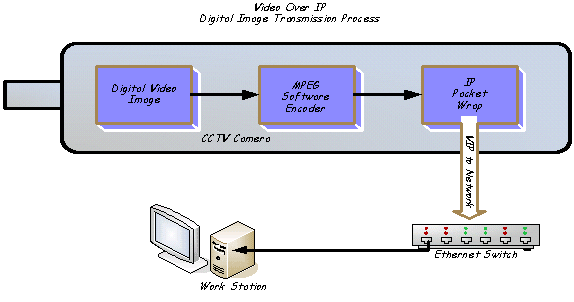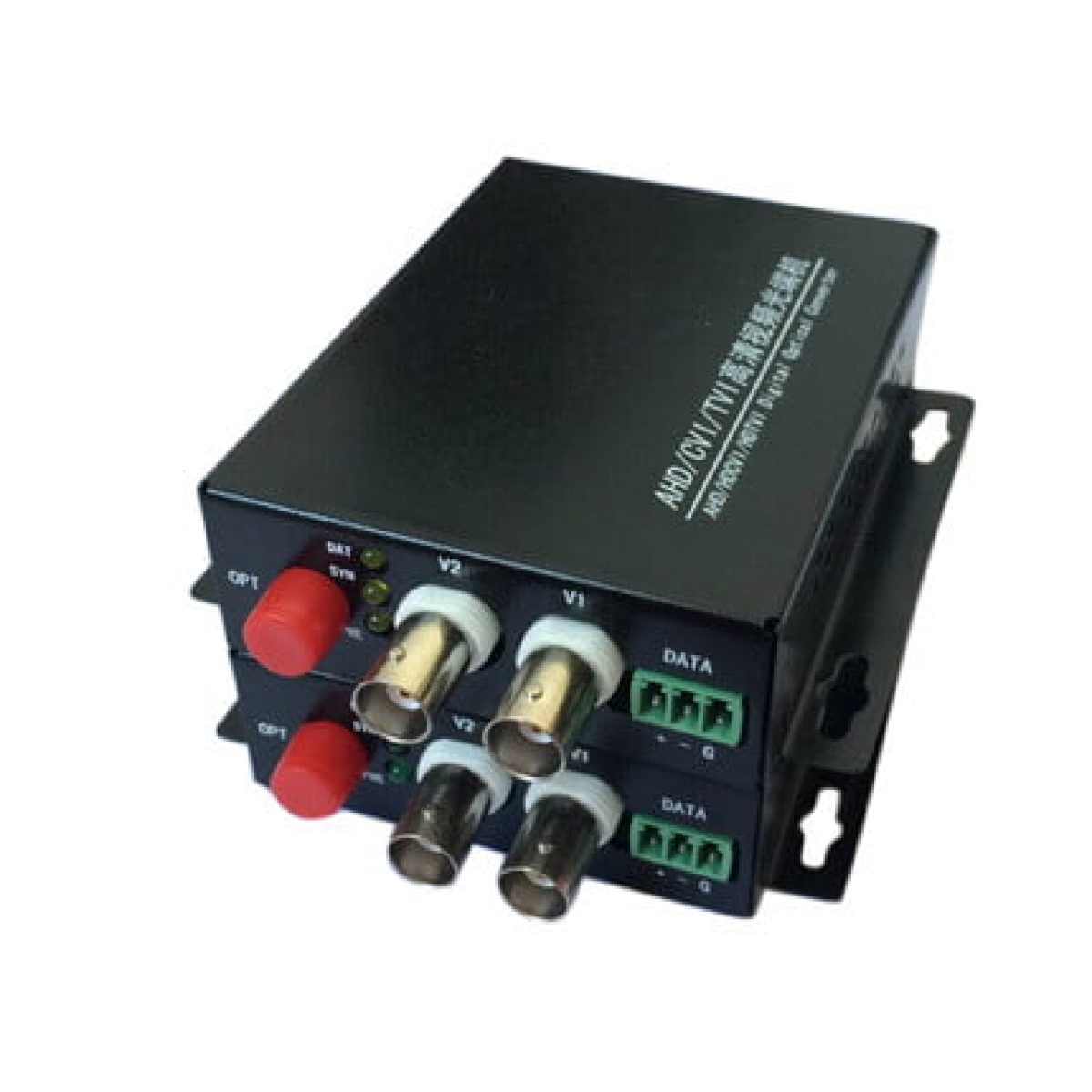Understanding the Benefits of CCTV Fibre Optic Cable in Advanced Security Systems
Understanding the Benefits of CCTV Fibre Optic Cable in Advanced Security Systems
Blog Article
Just How CCTV Cameras With Fiber Optic Result Enhance Long-Distance Surveillance
CCTV video cameras outfitted with fiber optic output represent a considerable advancement in long-distance security modern technology, supplying exceptional benefits over standard systems. By leveraging the buildings of light transmission with fiber optics, these cameras guarantee high-def video quality stays undamaged throughout comprehensive distances while effectively minimizing electro-magnetic disturbance. This advancement not just improves picture clearness but likewise simplifies installation procedures and resource appropriation. As we check out the ramifications of this modern technology, one must take into consideration exactly how these advancements are improving the landscape of safety and security and tracking systems in different applications.

Recognizing Fiber Optic Modern Technology
Fiber optic technology is increasingly made use of in long-distance surveillance applications because of its phenomenal capability for information transmission. This innovation employs thin hairs of glass or plastic fibers to transfer data as light signals, considerably minimizing the depletion typically related to typical copper cable televisions. The integral residential or commercial properties of fiber optics enable the transmission of huge volumes of information over significant ranges without loss of high quality, making it a perfect selection for applications requiring trusted interaction.
The concept of total inner reflection promotes the effective transmission of light within the fiber, making sure high bandwidth and speed. Unlike electrical signals in metal cables, fiber optics are immune to electro-magnetic disturbance, enhancing the honesty of data transmission. This characteristic is particularly useful in atmospheres with high degrees of electrical sound, such as industrial settings or city locations.
In addition, fiber optic cords are lighter and extra flexible than their copper counterparts, which simplifies installment and reduces architectural load. With their sturdiness and resistance to ecological elements, optical fiber are well-suited for outdoor applications, thereby extending the reach of keeping track of systems. Therefore, fiber optic innovation is coming to be a keystone in modern-day surveillance options, efficiently addressing the challenges of long-distance surveillance.
Advantages of Fiber Optic CCTV
Utilizing fiber optic modern technology in CCTV systems supplies numerous advantages that improve monitoring capacities. Among the key advantages is the ability to transfer high-def video clip over long distances without significant signal degradation. Unlike conventional copper wires, optical fiber can maintain video quality over comprehensive runs, making them suitable for big residential or commercial properties or remote tracking locations.
Furthermore, fiber optic cable televisions are less at risk to electro-magnetic disturbance, which can misshape signals in standard systems. This makes sure clearer pictures and uninterrupted solution, vital for security tracking. Fiber optics are inherently a lot more secure, as intercepting signals calls for specific tools, hence offering an additional layer of protection against unapproved gain access to.
The light-weight and compact nature of fiber optic cables also streamlines setup, enabling less complicated directing via limited spaces and minimizing general labor expenses. Their longevity makes them immune to environmental aspects such as wetness and temperature level variations, expanding the lifespan of the surveillance system.
Last but not least, fiber optic systems can sustain a higher number of cams on a single network, enhancing sources and supplying scalability for future development. These advantages make fiber optic CCTV systems a superior option for modern monitoring needs.
Comparison With Standard Systems
When important source comparing CCTV systems, traditional configurations frequently drop short in numerous essential locations, particularly in terms of range and signal stability. Conventional coax cable systems typically encounter significant signal degradation over cross countries, limiting reliable surveillance varies to around 300 feet (cctv fibre optic cable). Yet limit, picture clarity lessens, causing prospective dead spots and lowered surveillance efficiency
On the other hand, fiber optic systems keep signal integrity over a lot higher distances, frequently going beyond several miles without loss of high quality. This is largely due to their capability to transfer data as light signals, which are much less vulnerable to electromagnetic interference than electric signals made use of in traditional systems.
Additionally, conventional systems require more considerable maintenance and troubleshooting due to their susceptability to environmental variables such as wetness and electromagnetic sound. Fiber optic systems, conversely, offer enhanced durability and lower upkeep prices, as they are less prone to damage.
Applications in Long-Distance Surveillance
The benefits of modern-day CCTV systems in maintaining signal integrity over cross countries open a wide variety of applications for long-distance surveillance. One significant application is in city monitoring, where communities deploy fiber optic CCTV systems to keep track of public spaces, enhancing safety and deterring criminal activity. These systems give constant, top quality video clip feeds that are vital for efficient police and emergency reaction.
One more vital application is in industrial settings, where remote surveillance of producing procedures and unsafe areas is essential. Fiber optic CCTV can hold up against harsh settings and send information over cross countries without loss of quality, enabling for real-time oversight and decreasing risks to personnel.
Furthermore, important facilities such as airports, railways, and pipelines gain from long-distance CCTV tracking. Protection groups can manage huge areas from centralized control look at here spaces, ensuring rapid reaction to any kind of incidents.
Moreover, in farming settings, farmers use long-distance CCTV to monitor plants and livestock, helping to enhance efficiency and safety and security. Generally, the convenience and reliability of fiber optic CCTV systems make them essential throughout different sectors, allowing thorough monitoring services tailored to specific demands.
Future Trends in Surveillance Modern Technology
Just how will improvements in innovation improve the landscape of security? The future of monitoring pop over to these guys technology is poised for substantial makeover, driven by developments such as expert system (AI), artificial intelligence, and edge computing. These modern technologies make it possible for real-time information evaluation, enabling fast identification of potential hazards and boosted situational recognition.
AI-powered analytics will improve the precision of facial recognition systems, minimizing incorrect positives and making it possible for extra efficient tracking of people. The integration of Web of Things (IoT) devices will certainly help with a smooth network of interconnected security systems, boosting monitoring capabilities across vast locations.
Another pattern is the change towards cloud-based storage space options, which offer scalable information management and ease of access. This will certainly permit organizations to store substantial amounts of video data without the restrictions of physical storage, while making sure that information is quickly retrievable.

Verdict
In conclusion, CCTV electronic cameras geared up with fiber optic outcome stand for a considerable improvement in long-distance surveillance capacities. As security innovation proceeds to develop, the adoption of fiber optic options will likely play a pivotal function in improving security across varied applications.
Report this page